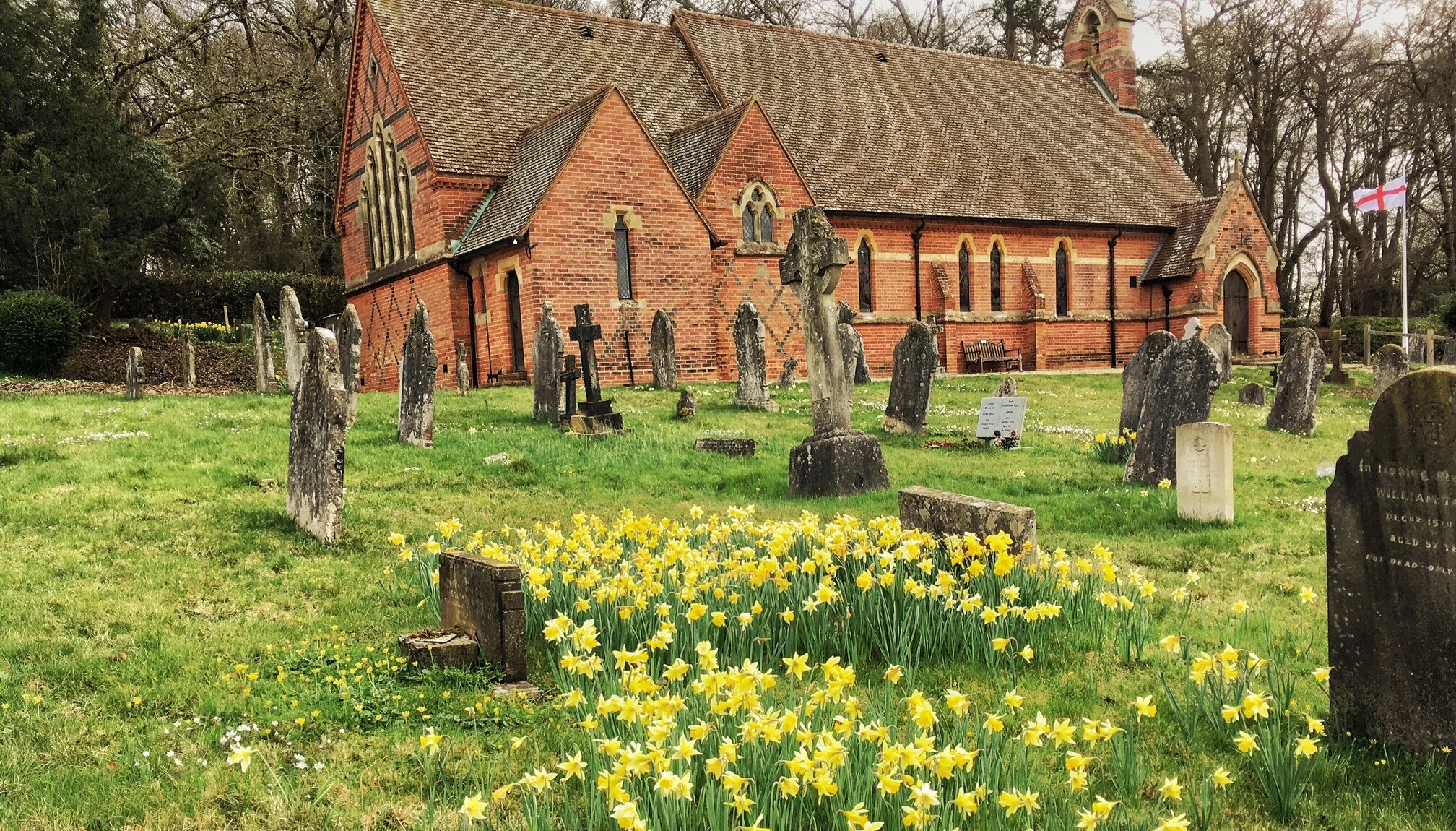A Brief History
We are fortunate that in the mid-19th century Admiral Frederick Moore Boultbee (1798-1876) visited Emery Down and bought a house here because he became our local benefactor. The building of the church, the school and the almshouses (Boultbee Cottages) as well as the establishment of the Parish of Emery Down was due entirely to the Admiral’s generosity and foresight. His home where he lived with his niece, Charlotte, became the vicarage after her death.
Completed in early 1864 and consecrated for worship later that year, the designing architect of Christ Church was William Butterfield FSA (1814-1900). Butterfield was the first Victorian architect to experiment with constructional colour and was the pioneer of the High Victorian phase of the Gothic Revival. His considerable talents are shown here in the way he could undertake much smaller and more intimate projects. Christ Church is built of red New Forest brick with blue diapers ingeniously detailed in a polychromatic design and Bath stone. The choir stalls contain kneeling boards unique to Butterfield’s specification. Seating about 100 people, the church has a delightfully domestic atmosphere and fits perfectly into its village environment.
The churchyard is open for burials, burial of ashes and contains four Commonwealth War Graves.
The entrance from the road is through a Lych Gate comprising the parish war memorial. It contains the inscribed names of 22 men who fell in The Great War and 4 who were killed in the 1939-1945 Second World War. The lives and family life of the men whose names are recorded is being researched and we would be delighted to hear from anyone who has any information, please email us.
Art
Stations of the Cross – Nave and Chancel
We are very fortunate to have on permanent display in the church fifteen egg tempera paintings in traditional Byzantine style written by Sister Theresa Margaret CHN. The Icons are written on larch wood panels donated by the Forestry Commission. The colours are mainly white, red, brown and blue to blend in with the stained-glass windows. In addition to the standard fourteen ‘stations’ a fifteenth has been included depicting the glorious victory of Easter. The work was commissioned by two members of the congregation, specifically for this church and its people in 2000. Please come and see them.
Textiles
An Altar Frontal for All Seasons was completed in 1989. Designed and embroidered by local artist, Joan Van Schaick, the leaves in the liturgical seasonal colours were worked by parishioners.
“The light of God encircles the Cross turning it to gold and flows into the world and into the Forest”
Our Past,
Our Future
Under the New Forest National Park Authority’s landscape scheme, Our Past, Our Future, (supported by Heritage Lottery funding), Archaeovision took part in one of the first community days for their Rediscovering and Conserving Our Archaeological Heritage project. The aim is to better equip the New Forest to thrive; to restore lost landscapes, develop forest skills and to discover forest heritage.
As part of the the Rediscovering Heritage project, community archaeology, including surveys to locate new and existing sites and historic structures will be developed upon. One of the first stages of this programme was the introduction of heritage recording within a graveyard at Emery Down.
Photo opposite shows volunteers surveying the churchyard
Making it clear
As part of the ‘Our Past, Our Future’ Heritage Lottery Funded (HLF) Landscape Partnership Scheme, the New Forest National Park Archaeology Team have worked with Emery Down to survey the condition of, and record the monuments in Christ Church graveyard. The survey will help accurately map and identify monuments that can be conserved using HLF funds and will ultimately create a database for ongoing management of the graveyard.
Photo above shows a grave before and after Reflectance Transformation Imaging (RTI)





